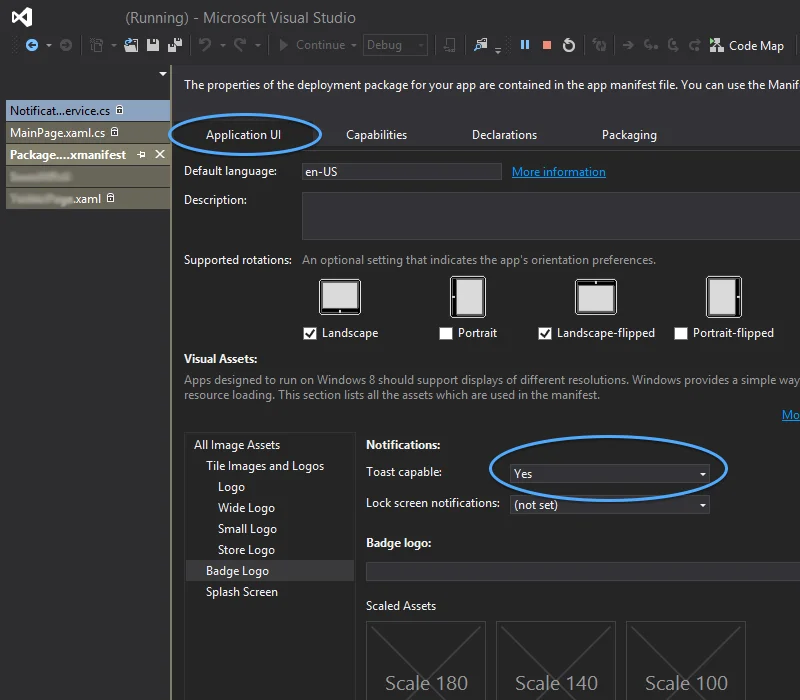SDK Javascript pour Windows
Télécharger le SDK
Exemple JS W8
Intégration du SDK
Anchor link toPour intégrer Pushwoosh dans votre application JS Windows, suivez les étapes ci-dessous.
1. Téléchargez notre package SDK.
2. Ajoutez une référence à PushSDK/Project-Win8.1-WNS/PushSDK.winmd dans votre projet
Ou PushSDK/Project-Win10-WNS/PushSDK.winmd si vous développez pour Windows 10
3. Initialisez le service push avec le code suivant :
var service = new PushSDK.NotificationService.getCurrent("YOUR_PUSHWOOSH_APP_ID");
service.ononpushaccepted = function (args) { // code pour gérer la notification push // afficher la charge utile de la notification push pour les tests uniquement var md = new Windows.UI.Popups.MessageDialog(args.toString()); md.showAsync()}
service.ononpushtokenreceived = function (pushToken) { // code pour gérer le jeton push}
service.ononpushtokenfailed = function (error) { // code pour gérer l'échec de l'abonnement push}
service.subscribeToPushService();4. Dans votre fonction app.onactivated, ajoutez ce qui suit :
app.onactivated = function (args) { if (args.detail.kind === activation.ActivationKind.launch) { if (args.detail.previousExecutionState !== activation.ApplicationExecutionState.terminated) { // TODO: Cette application vient d'être lancée. Initialisez // votre application ici.
// Gérer le push de démarrage PushSDK.NotificationService.handleStartPush(args.detail.arguments);
Fonctionnalités avancées
Anchor link toTags
Anchor link toAvec les tags, vous pouvez créer un ensemble d’appareils basés sur différents critères.
1. Créez une liste de tags :
var keys = ["name1", "name2"];var values = ["value1", "value2"];2. Envoyez les tags à Pushwoosh :
service.sendTag(keys, values);